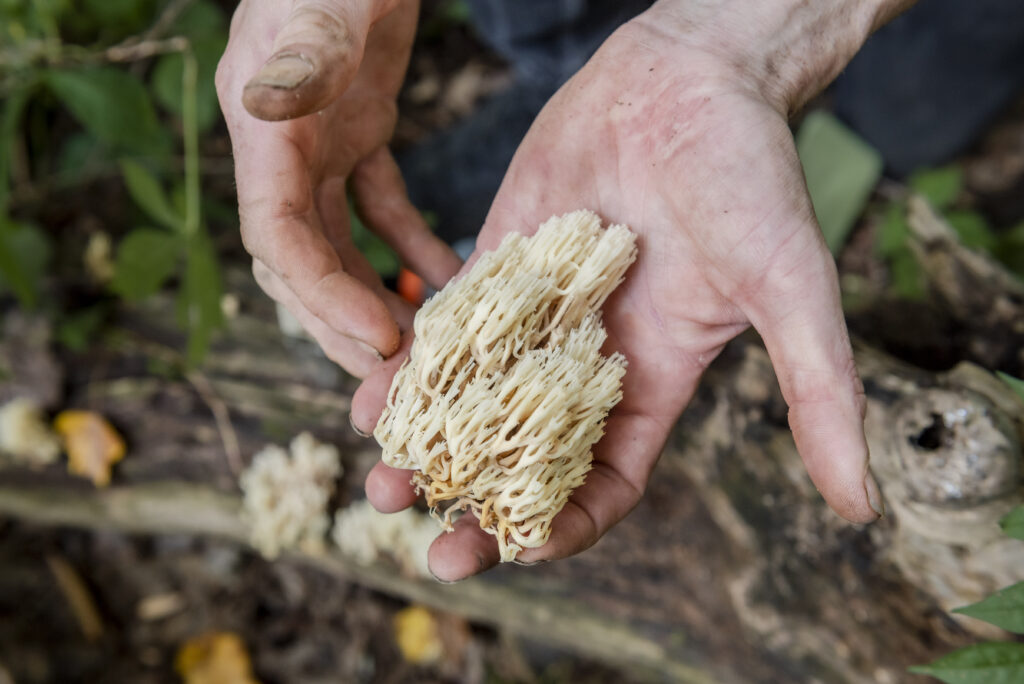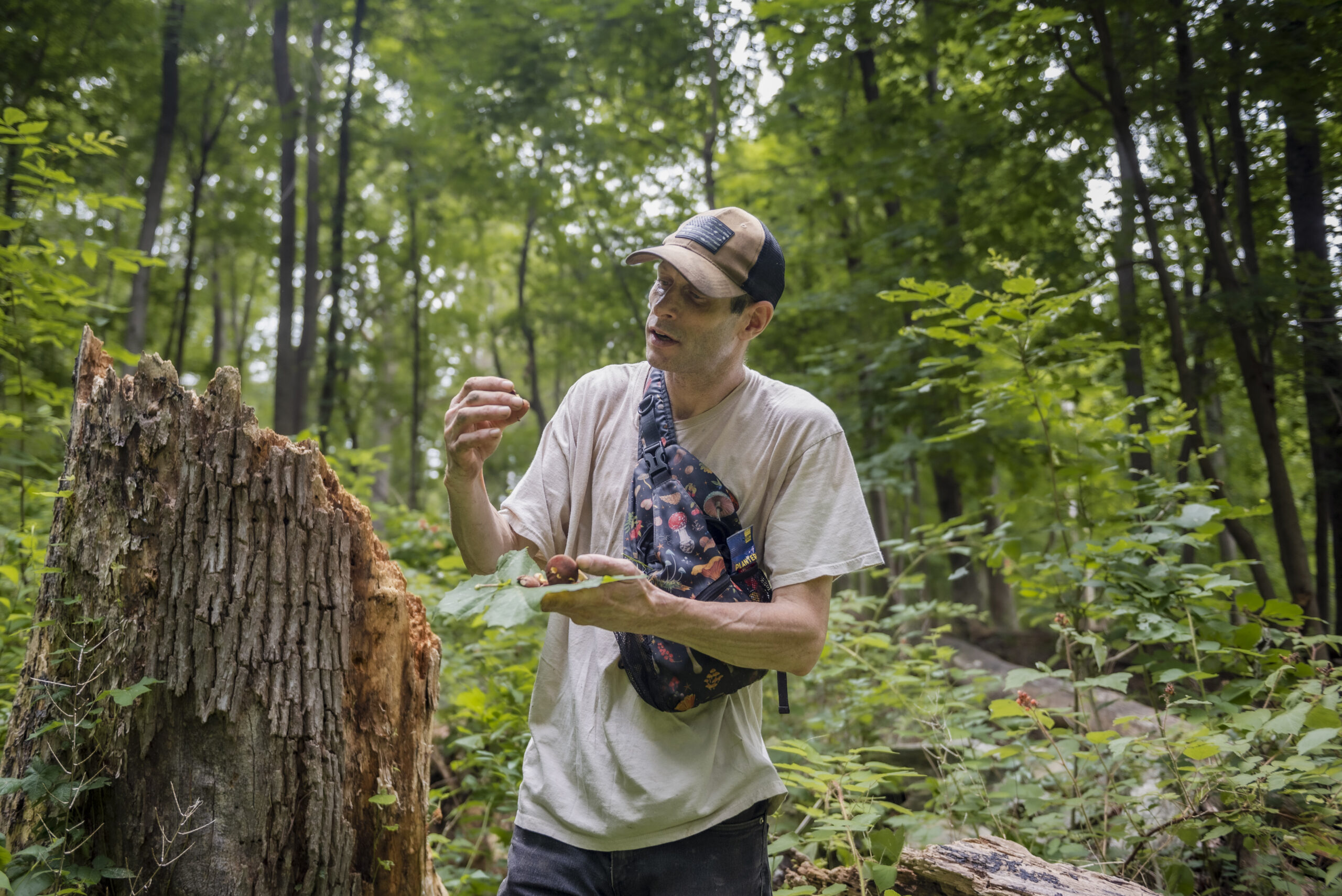Fall Foraging
By Arvind Dilawar
Photographs by Sabrina Eberhard
For many, autumn signals the beginning of the end, with the fleeting sunshine and falling foliage hinting at the cold, dark days ahead.
But for chef-turned-forager James O’Neill, autumn is a season of plenty. Prized American black walnuts cluster on their branches, much-sought-after hen-of-the-woods mushrooms spring from the sides of oak trees, Concord sweet wild grapes ripen on the vine—and all of it is there for the taking, if only you know where to look.
“Fall is a close second to late summer for being the best time for foraging,” says O’Neill, a former chef who now leads foraging workshops in the Hudson Valley as part of Deep Forest Wild Edible. “There’s just so much stuff that comes out.”
While O’Neill holds certification for identifying mushrooms in New York State, he’s gained his particular knowledge of foraging through a career that’s taken him from the forest to the kitchen and back again. Following high school, the Newburgh native hoped to become a park ranger, but was turned off by the bureaucracy of the position. Instead, he entered fine dining, traveling to Prince Edward Island in Canada to join his cousin, celebrity chef Michael Smith, at the renowned Inn at Bay Fortune.

Altogether, O’Neill worked in the restaurant industry for 25 years, and has been foraging for more than a decade, at first selling his harvests directly to chefs in the Hudson Valley, then expanding his offerings to home cooks, and leading workshops from his home in Beacon. His two-hour workshops cover the basics of foraging, including plant and mushroom identification and preparation, as well as health and legal considerations, such as areas prone to pollution or legally off-limits. For those more interested in the dining table than the hiking trail, O’Neill also markets plants and fungi he forages himself, on his Instagram account.
Foraging is a catch-as-catch-can pursuit, as O’Neill explains. He notes that spring and summer are best for wild vegetables and autumn for mushrooms and teas, while winters are mostly reserved for prep. But that doesn’t mean the adventurous gourmand needs to rush to Mount Beacon with pail in hand before the leaves begin to change color. Rather, O’Neill recommends that fall foragers start out in their own backyards, searching for the white caps of puffball mushrooms, golden bunches of honey mushrooms, and brown tips of the aptly named stinkhorn mushrooms. O’Neill stresses that certainty is paramount.
“You should be 100 percent sure, always, that you know what it is that you’re eating before trying it,” he says. “Toxins are not fun.”
O’Neill also recommends that thoughtful foragers think of the lean winter days ahead, and prepare accordingly; otherwise the fall bounty won’t last long.
“Think about preservation of food,” he says. “Pickling, freezing, dehydrating, fermenting—things that are going to allow you to store this stuff, and be able to utilize it in your cooking and eating throughout the winter. I would say that’s probably the most important thing …other than not killing yourself.”—deepforestwildedible.com

